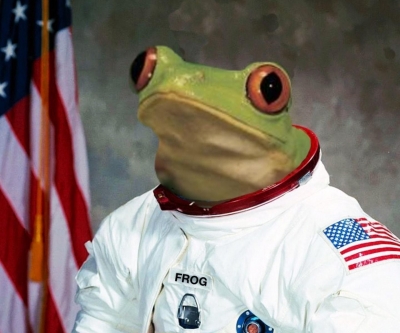
The Orbiting Frog Otolith (OFO) was a NASA space program which sent two bullfrogs into orbit on 9 November 1970 for the study of weightlessness.
The Frog Otolith Experiment (FOE) was developed by Torquato Gualtierotti of the University of Milan, Italy, when he was assigned to the Ames Research Center as a resident Research Associate sponsored by the National Academy of Sciences. Originally planned in 1966 to be included on an early Apollo mission, the experiment was deferred when that mission was canceled. In late 1967 authorization was given to orbit the FOE when a supporting spacecraft could be designed. The project, part of NASA’s Human Factor Systems program, was officially designated “OFO” in 1968. After a series of delays, OFO was launched into orbit on 9 November 1970.
After the successful OFO-A mission in 1970, interest in the research continued. A project called Vestibular Function Research was initiated in 1975 to fly a vestibular experiment in an Earth-orbiting spacecraft. This flight project was eventually discontinued, but a number of ground studies were conducted. The research has given rise to several very useful offshoots, including the ground-based Vestibular Research Facility located at ARC.
OFO should not to be confused with similar acronyms describing the Orbiting Observatory series of spacecraft, such as Orbiting Geophysical Observatory (OGO), Orbiting Solar Observatory (OSO), and Orbiting Astronomical Observatory (OAO).
Picture Credit : Google




